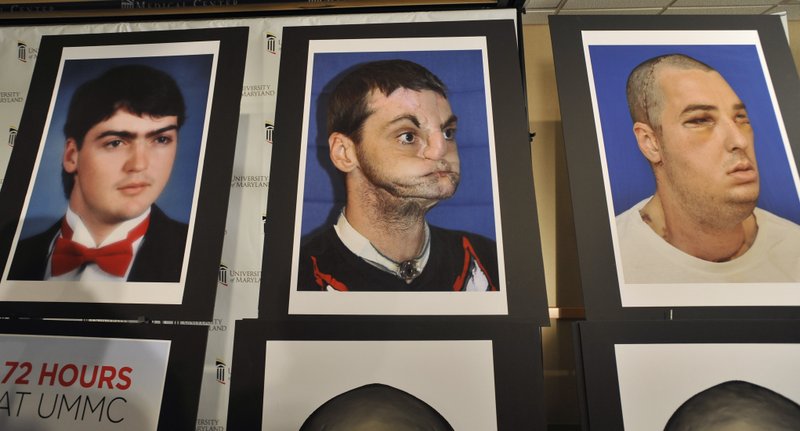BALTIMORE — After 15 years of wearing a mask and living as a recluse, a 37-yearold Virginia man disfigured in a gun accident got a new face, nose, teeth and jaw in what University of Maryland physicians say is the most extensive face transplant ever performed.
Richard Lee Norris of Hillsville is recovering well after last week’s surgery, beginning to feel his face and already brushing his teeth and shaving, University of Maryland Medical Center officials announced Tuesday. He’s also regained his sense of smell, which he had lost after the accident.
Norris, who was selected for the surgery from among five candidates, has been living as a recluse, shopping at night.
“It’s a surreal experience to look at him. It’s hard not to stare. Before, people used to stare at Richard because he wore a mask, and they wanted to see the deformity,” said Dr. Eduardo Rodriguez, the lead surgeon. “Now they have another reason to stare at him, and it’s really amazing.”
Rodriguez showed a 1993 prom photo of Norris, “as we all want to be remembered,” beside a pre-transplant photo of Norris’ shortened face with a sunken mouth and flattened nose. He then revealed a photo of Norris taken on Monday, where his face appears ordinary, other than stitches along his hairline and neck and scarring around his eyelids. Although he now has the donor’s face, he doesn’t resemble the donor, Rodriguez said.
“It’s a combination of two individuals, a true blend,” he said.
Norris’ vision was largely unaffected by the accident. Because of numerous reconstructive surgeries, his forehead and neck were mostly scar tissue. Norris had no teeth, no nose and only part of his tongue. He was still able to taste but could not smell.
Doctors, citing the family’s desire for privacy, gave few details about the donor, whose organs went to several people.
The 36-hour operation was the most extensive because it included transplantationof the teeth, upper and lower jaw, a portion of the tongue and all facial tissue from the scalp to the base of the neck, Rodriguez said. Because it included so much facial tissue, the incisions are farther back and less visible, he said.
The most dramatic moment came when the team had finished removing all the previous attempts at reconstruction. All Norris had left was a bit of tongue and minimal protection for his eyes.
“At that point, we had to be successful,” he said.
It was the 23rd face transplant since doctors began doing the procedure seven years ago.
Information for this article was contributed from Washington by Ben Nuckols of The Associated Press.
Front Section, Pages 2 on 03/28/2012
